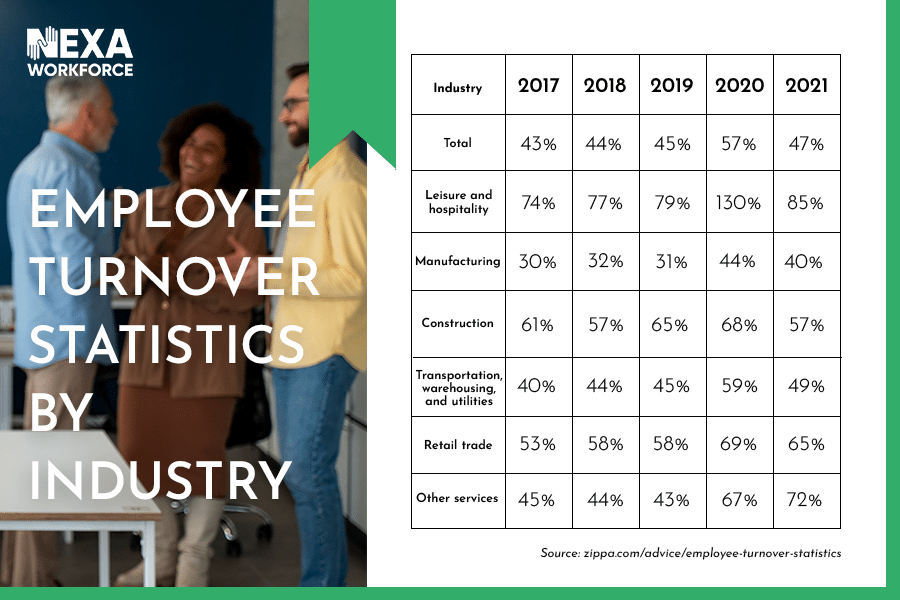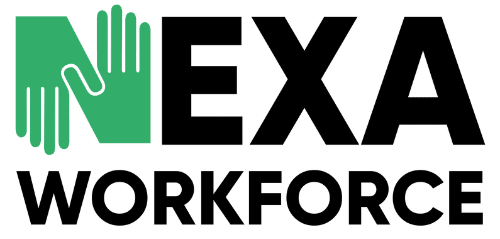Annually, American companies incur losses amounting to billions of dollars as a result of staff attrition. A recent study from HRDIVE reveals that the typical expense incurred from the departure of an employee stands at $15,000.
This figure encompasses the financial outlays for recruitment, training, induction, and the dip in productivity. Employee Turnover is a complex and multifaceted problem that has many causes and consequences.
In this article, we will explore these factors in detail and examine how they affect different industries and regions in the US. Also, we will discuss some of the solutions to address the turnover challenge.
Key Takeaways
- U.S. businesses face over $1 trillion annually in costs due to employee turnover, encompassing both direct and indirect expenses.
- With an average turnover rate up to 46.8%, companies experience significant financial strain and reduced product quality and morale.
- Turnover costs extend beyond hiring and training to include lost productivity, missed opportunities, and other intangible impacts.
- Case studies show how high turnover rates can hinder innovation and cost millions, emphasizing the need for effective management strategies.
Understanding Employee Turnover
Employee turnover is the process of workers parting ways with the company or organization they work for. It is a significant metric in human resources, representing the number of employees who leave a company over a specific period.
The average turnover rate among U.S. businesses between 2022 and 2023 was 17.3%, with a total annual non-farm U.S. quit rate of 2.5%. However, the overall employee turnover rates in the U.S. were projected to reach a staggering 46.8%.
These figures highlight the critical role of effective HR strategies in managing employee turnover, enhancing the employee experience, and ensuring organizational stability.
It’s evident that addressing employee turnover is crucial for businesses to maintain their competitiveness and growth.
Bridge the Gap with Nexa Workforce Staffing Solutions!
The Financial Impact of Turnover
In 2023, the overall cost of voluntary employee turnover in the U.S. was estimated to be over $1 trillion. This high cost is due to several factors, including the direct and indirect costs associated with replacing an employee.
Direct Costs of Turnover:
These are the expenses incurred while searching for and hiring a replacement employee. They usually include separation costs (like severance pay), hiring costs (advertising, screening, and interviewing candidates), and training costs.
The cost associated with replacing a single employee can vary between 0.5 to 2 times tier yearly salary. For hourly workers, the cost of replacing an employee can be up to $4,500.
Overall Cost of Voluntary Employee Turnover:
Voluntary turnover, where employees leave an organization of their own will, can be particularly costly.
In 2023, the overall cost of voluntary employee turnover amounted to over $1 trillion. This cost includes both the direct costs of hiring and training new employees and the indirect costs associated with lost productivity and decreased morale.

Costs of Employee Turnover
When an employee leaves, the position they vacate incurs several costs. These costs can be broadly categorized into three primary categories:
Hard Costs
These include the expenses to source, attract, and hire an employee to fill the vacant position.
These expenditures include all facets of the hiring process- from promoting the position, onboarding, training, and the time it takes for the new hire to reach full productivity, to potential business errors associated with the new addition to the team.
Soft Costs
These are intangible costs such as lost productivity, decreased efficiency, and the negative impacts on employee morale.
Reduced quality of customer service and harm to your company’s image or reputation in the eyes of customers and competitors from having a position sit open are also included in this category.
Lost Opportunities
These missed growth opportunities stem from the absence of a person in a specific role. Reduced productivity has a ripple effect on your bottom line.
It not only implies potential extra expenses in overtime but also entails overlooking business and product development chances that are hindered by strained operations.
Cost of Vacancy
Approximately two-thirds of the incurred costs related to turnover are intangible, encompassing lost productivity and knowledge, both integral components of the cost-of-vacancy calculation.
The financial impact of turnover is substantial, with estimates suggesting that losing an employee can set a company back anywhere from one half to two times the employee’s salary.
For hourly workers, the average cost amounts to $1,500 per employee.
The Hidden Costs of Turnover
These are the intangible expenses incurred by a company when an employee leaves, such as loss of productivity, morale, and institutional knowledge.
A study from Wharton’s Ken Moon reveals a direct link between higher quit rates and product failure for a smartphone manufacturer.
Case Studies
Ken Moon’s Study on Employee Turnover
A study conducted by Ken Moon from Wharton revealed the hidden cost of employee turnover. The research established a clear connection between elevated quit rates and product failure in case of a smartphone manufacturer.
Collaborating with a prominent Chinese manufacturer, the study meticulously tracked the failure rates of 50 million cellphones over a span of four years of consumer usage.
Their findings revealed a noteworthy correlation i.e. for every percentage-point rise in the weekly turnover rate among workers, there was a corresponding increase in product failure ranging from 0.74% to 0.79%.
Devices produced in high-turnover weeks following monthly paydays experienced a 10.2% higher likelihood of failure compared to those produced in low-turnover weeks just before payday.
In non-peak turnover weeks, assembly lines with higher turnover were responsible for approximately 2% to 3% more field failures on average. The resultant costs were substantial, totaling hundreds of millions of dollars.
Case Study 2: Experian’s Employee Turnover
Experian, a global information services company, was facing resignation rates globally that were 4% over the industry benchmark. Every 1% increase in turnover was costing the business around $3 million. This high turnover rate was putting a strain on growth and innovation.
To address this issue, Experian applied data and analytics to gain insights into employee needs and motivations. As a result, global attrition reduced by 4%, saving the business $14 million over 2 years.
These case studies highlight the significant impact of employee turnover on businesses, not just in terms of financial costs, but also in terms of product quality and employee morale.
Bridge the Gap with Nexa Workforce Staffing Solutions!
Strategies to Reduce Turnover
High turnover rates can lead to increased recruitment costs, decreased productivity, and a negative impact on team morale. Therefore, implementing effective strategies to reduce turnover is crucial.
Some effective strategies that can help:
Recognizing Employees
Recognizing employees’ achievements and contributions is a powerful way to boost morale and performance.
When employees feel valued, they are more engaged, motivated, and likely to go the extra mile for their company. Regularly acknowledging employees’ hard work and achievements can foster a positive work environment and increase employee retention.
Promoting Core Values
Promoting core values within the organization can create a sense of unity and purpose. When employees align with the company’s core values, they are more likely to feel connected to the organization and its mission.
Implementing the Company Mission
A clear and compelling company mission can guide employees’ actions and decisions. When employees understand and connect with the company’s mission, they are more likely to stay committed to the organization and contribute to its success.
Conducting Exit Interviews
Exit interviews provide valuable insights into the reasons behind employee departures. They can help identify patterns and issues, leading to improvements in the employee experience and reduction in turnover.
Hiring People Who Match the Company Culture
Hiring individuals who align with the company’s culture can lead to improved employee retention and performance. A strong company culture attracts top talent, engages and motivates employees, and creates a more positive work environment.
Embracing Foreign Employees
In the quest to curb the high costs of employee turnover, U.S. businesses are increasingly considering the integration of foreign employees as a strategic alternative.
This approach not only brings a fresh perspective and a diverse set of skills to the workplace but also tends to result in lower turnover rates due to the commitment often exhibited by individuals seeking long-term employment opportunities abroad.
See also: Immigrants in the US Workforce
Wrapping Up
The employee turnover exacts a substantial toll on businesses, with both visible and concealed costs impacting financial stability and operational efficiency.
NEXA Workforce emerges as a pivotal ally for U.S. businesses confronting the financial burdens of employee turnover. By offering tailored staffing solutions, we aid companies in adapting to economic shifts, reducing turnover costs, and fostering a sustainable, diverse workforce.





